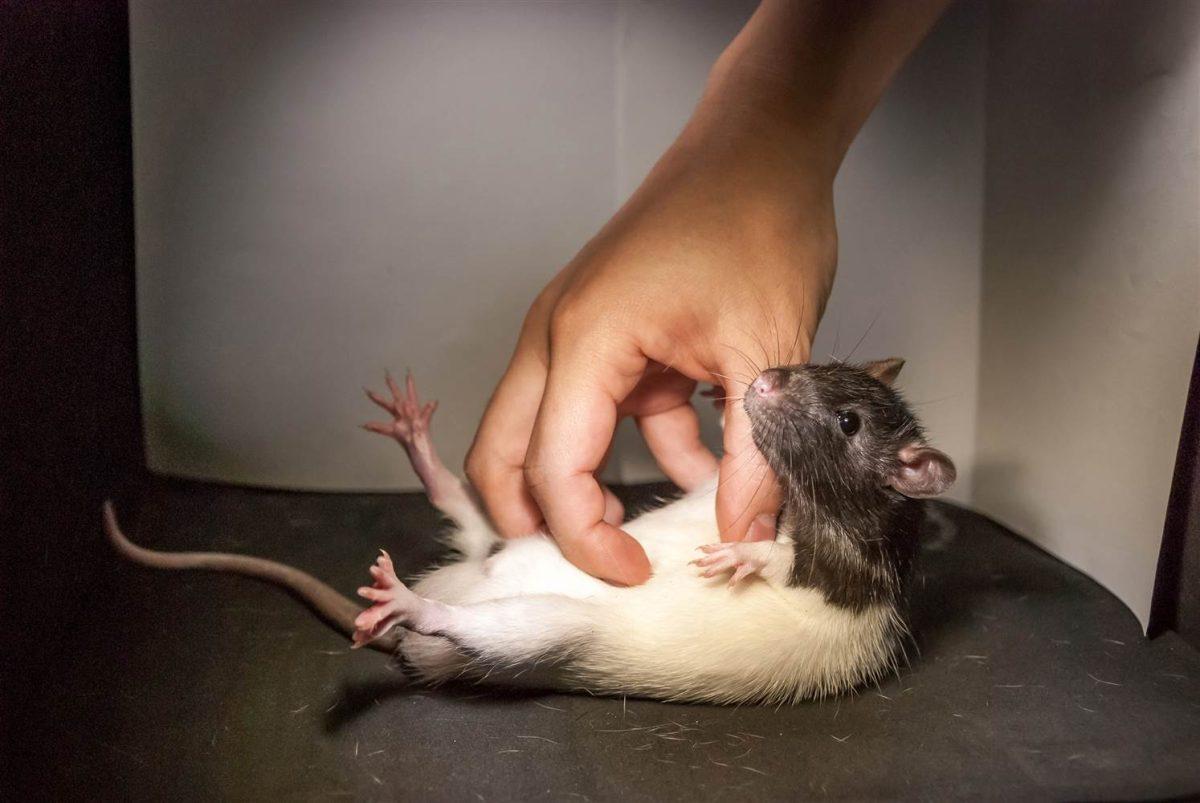Scientists recently discovered that rats have their own equivalent of laughter, which is inaudible to humans but still released when humans tickle them. Researcher Shimpei Ishiyama recently authored a study that links this behavior to brain activity and the creation of happiness and joy.
When rats are tickled, they “giggle,” according to Ishiyama at Humboldt University of Berlin. Under normal conditions, this laughter is impossible to hear. Humans generally hear sound between 20 hertz and 20 kilohertz, but the rats’ ultrasonic vocalization occurs at 50 kilohertz. Therefore, researchers needed special instrumentation to listen to and track the sounds the rats made.
By tracking these high pitched sounds, the researchers determined several preliminary facts about the effect of tickling on rats. One of the rats’ reactions is that they exhibit an acrobatic move called Freudensprünge, in which they actually jump for joy.
They are also more likely to giggle when their stomach is tickled, as opposed to their back or tail. Additionally, when rats are in conditions of stress, like when they are under bright lights, they are much less likely to laugh when tickled. The researchers wanted to determine if these phenomena were traceable in the brain.
In humans, the somatosensory cortex of the brain is associated with touch. The nerve cells that are stimulated by the tickling are responsive to touch, so researchers determined that this area of the brain might show activity when rats are tickled.
When the scientists used electrodes on the rats while tickling them, a part of the somatosensory cortex that is related to the trunk or the midsection of the rat demonstrated high levels of activity.
A small stroke on the stomach of the rat also created a response in the somatosensory cortex, but it was a much smaller one. There seemed to be a correlation between the Freudensprünge joy jumps, the laughter and the stronger response in the somatosensory cortex.
In addition to this brain response, or perhaps because of it, there rats also display a dopamine response to the tickling. This dopamine release creates a joyful, happy response in the animals. In order to determine whether the process could be reversed and brain activity could cause the happy play behavior, the scientists electrically stimulated the somatosensory cortex. When this occurred, the rats emitted the same laughing sound even though they were not being touched.
Interestingly, compared to the study of emotions like sadness and hopelessness there is a disproportionately small amount research that has been done on how feelings of joy and happiness are created. This discrepancy makes sense because of the need to develop antidepressant drugs, a process that requires understanding more negative feelings. Ishiyama says that in terms of research, “People really underrate the positive things — fun, happiness, joy.” This study is one that aims to correct this discrepancy and could possibly serve as a new angle to study depression.







